May I present a SemiSerious Poem:
Pozole red, pozole green
Pozole fat, pozole lean
Some use the chilies, some use cumin
Some prefer pork, now that we don’t use Human.
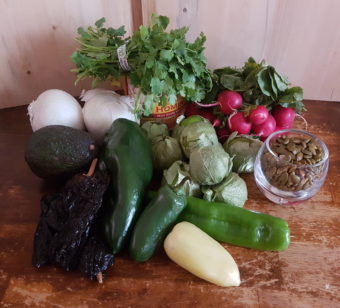
So many fresh ingredients in Pozole!
Now don’t get confused that I mean one is better than the other; to say that the pozole rojo is fatty and ‘gross’ while pozole verde is leaner and a better choice. It just reminded me of Dr. Seuss. As far as the ‘human’ part? You’ll just have to keep reading. However, if you do have a particular dietary regimen, I probably have an option that will work to make pozole just right for you!
First, what is Pozole? An absolute favorite, truly authentic dish of Mexico. When we, speaking as an American, think of Mexican food, it is very often that the ‘heavy’ dishes common in Mexican restaurants come to mind. Chile rellenos, enchiladas, and chimichangas, always with the rice and the beans on the side, and lots and lots of sauce. Everything is deep fried. And cheese! Always extra cheese on everything! This is not real Mexican food. What you are really getting is ‘Tex-Mex.’
As Margarita Carrillo Arronte, Chef, TV Host, and Member of the Conservatory of Mexican Gastronomic Culture, puts it in an interview with Smithsonian Journeys, “Mexican cuisine is mainly based on corn, chilies, beans, and pumpkin seeds.” <— That, is not what you get in ‘Mexican Restaurants.’
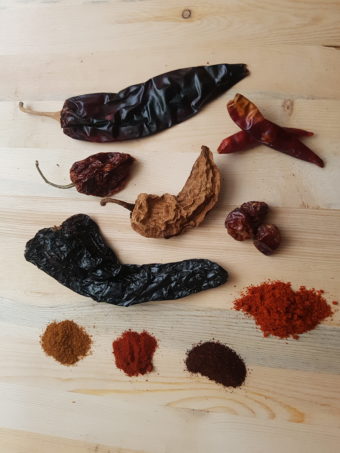
Dried Chilies, from top down: Gaujillo, 2 Japones, Habanero, Chipotle, Dundicuts (from Pakistan), a Large Ancho. Ground chilies from left to right: Cayenne, Smoked Paprika, Pasilla, de Arbol.
She goes on to explain that they also have a different way of going about their daily eating routine. “We have a heavy breakfast and then a heavier meal at lunchtime,” which she said she would come home from school to eat, “and then a light dinner. In the evening we have just a quesadilla or a yogurt or a bowl of cereal. Something very simple.” She also shares, “After you have finished your meal, you stay with coffee — maybe the older men with a cognac, or maybe a cigar — and then talk, talk a lot, and be there for sometimes hours, depending on the day.” This is called Sobremesa. “My father came home from his office every day to have lunch with us. It was time for conversation.” Man, I think a lot of Americans could benefit from lifestyle like this!
In fact, because true Mexican food, (not the fatty, greasy, fried, cheap stuff we are usually served,) is so unique it has been included on the list of Intangible Culture Heritage of the world by UNESCO.
So how does this tie to pozole? Well a good, true pozole contains all of the key, traditional, Mexican ingredients; corn in the form of hominy, chilies (LOADS OF THEM), papitas, and particularly in vegetarian varieties, beans. You may even notice, as you put yours together, especially in the garnishes, the many color references to the Mexican flag; red, white, and green. As for it’s historic creation and ceremonial use? It is such an incredible tale that I will simply reference you to this portion of the ‘Pozole’ Wiki page:
“Pozole was mentioned in Fray Bernardino de Sahagún’s General History of the Things of New Spain (c. 1500). Since maize was a sacred plant for the Aztecs and other inhabitants of Mesoamerica, pozole was made to be consumed on special occasions. The conjunction of maize (usually whole hominy kernels) and meat in a single dish is of particular interest to scholars, because the ancient Americans believed the gods made humans out of masa (cornmeal dough).
“According to research by the Instituto Nacional de Antropología e Historia (National Institute of Anthropology and History) and the Universidad Nacional Autónoma de México, on these special occasions, the meat used in the pozole was human. After the prisoners were killed by having their hearts torn out in a ritual sacrifice, the rest of the body was chopped and cooked with maize, and the resulting meal was shared among the whole community as an act of religious communion. After the Conquest, when cannibalism was banned, pork became the staple meat as it “tasted very similar” [to human flesh], according to a Spanish priest.”
Okay, so how many of you would now like a vegetarian version?
The good news is that below I have just that. If you would like to make your pozole green or red, with or without meat, there is an option for you!
The real difference between the two is very simple; fresh chilies or dried?
Each recipe has suggestions for chilies to use, but it’s really up to your personal preference. If you would like your pozole verde hot, use some jalapenos. If you really like the smokiness of chipotle, grind some dried ones into your mix for pozole rojo. Check out the fresh chilies at your local grocer and the dried options in the ethnic foods isle. Experiment. Enjoy yourself! Try something new today!
Traditional Pozole Verde with Chicken (link)
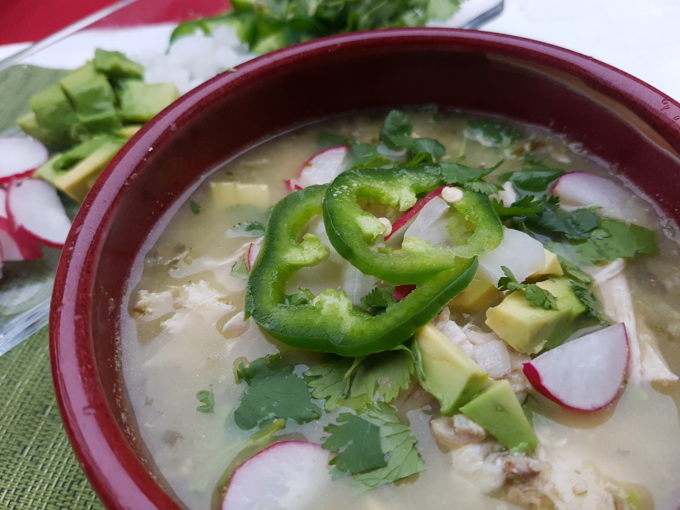
Vegetarian Pozole Verde – Green Pozole with Beans (link)
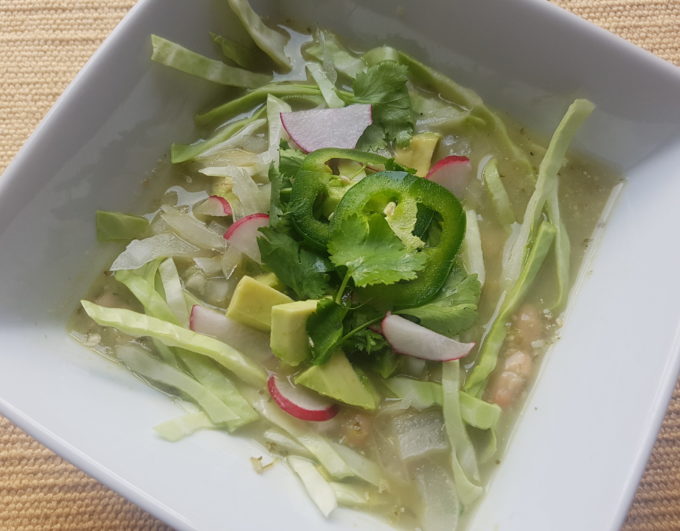
Pozole Rojo with Pork Shoulder or Ribs (link)
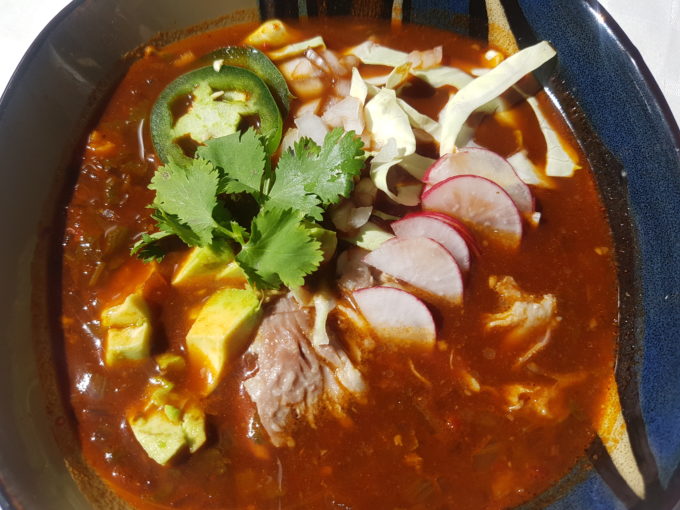
The addition of the avocado is nearly crucial in holding the heat under control in this dish.
Vegetarian Pozole Rojo (link)
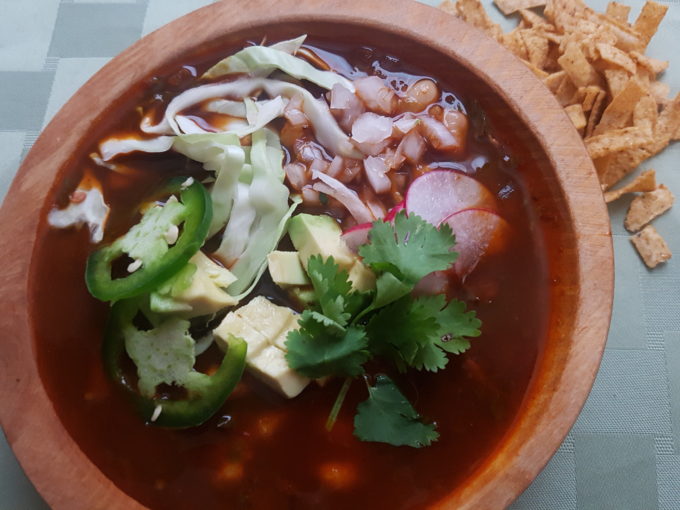
Without having to wait for meat to simmer, this soup becomes incredibly quick to make.

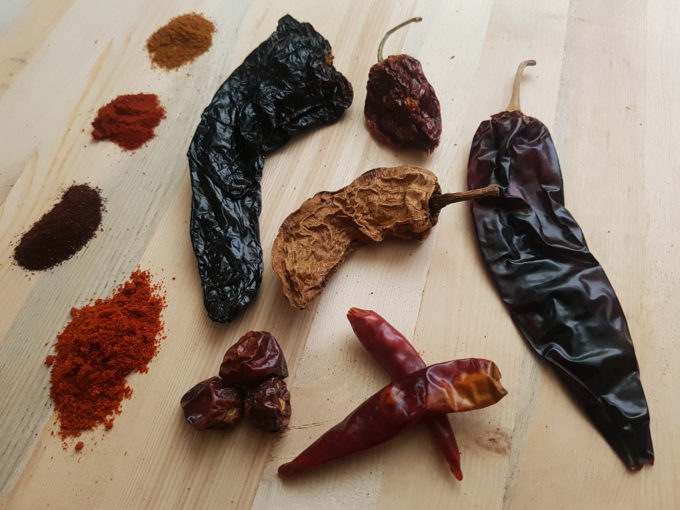
Post a comment